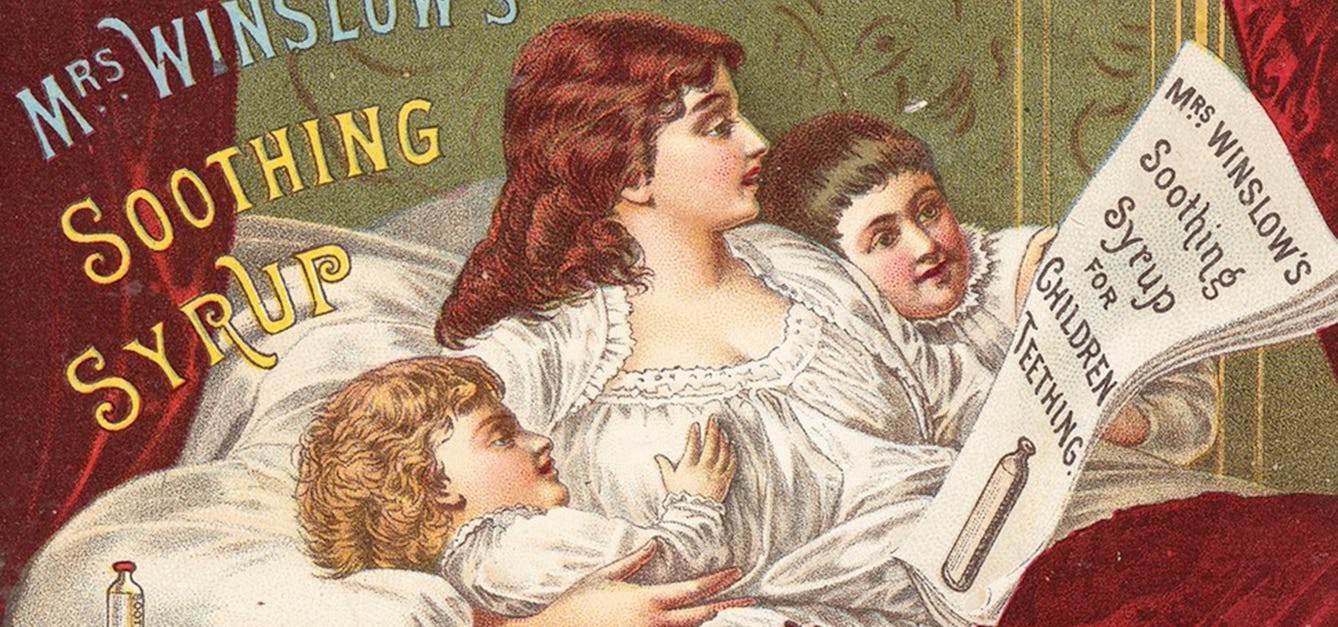Stories

- Article
Illuminated manuscripts, illuminating medicines
From rare bugs to exorbitantly priced plant parts, find out more about the artistic and medical uses of pigments from the past.

- Article
The poor child’s nurse
Charming family scenes in Victorian ads for children’s medicines were at odds with some of the dangerous ingredients they contained.

- Article
What Black women do when the NHS fails them
Sabrina-Maria Anderson explores misogynoir – hatred of Black women – within the NHS, and how women like her are consequently turning to other sources of medical support.

- Article
Epidemic threats and racist legacies
Epidemiology is the systematic, data-driven study of health and disease in populations. But as historian Jacob Steere-Williams suggests, this most scientific of fields emerged in the 19th century imbued with a doctrine of Western imperialism – a legacy that continues to influence how we talk about disease.
Catalogue
- Books
- Online
The history and antiquities of Tewkesbury, from the earliest periods to the present time. Collected from ancient records and other authentic materials. To which is added, some account of the Medicinal water, near Tewkesbury.
Dyde, William.Date: MDCCXC. [1790]- Books
- Online
A philosophical inquiry into the nature and properties of common water: with annexed observations on its Medicinal Qualities, &c. By Polydore Lewis, M. D. Member of the Societies at Edinburgh; and Physician to the General Hospital, Isle of Wight.
Lewis, Polydore, -1794.Date: MDCCXC. [1790]- Books
- Online
An account of a method of preserving water, at sea, from putrefaction, and of restoring to the water its original pleasantness and purity, by a cheap and easy process: to which is added a mode of impregnating water. In large quantities, with fixed air, For Medicinal uses, on Board ships, and in Hospitals: and likewise a process for the preparation of artificial yeast. By Thomas Henry, F. R. S. And Member of the Medical Society of London.
Henry, Thomas, 1734-1816.Date: MDCCLXXXI. [1781]
- Digital Images
- Online
Rosmarinus officinalis L. Lamiaceae Rosemary. Woody perennial. Distribution: Mediterranean. Quincy (1718) commended the flowers for epilepsy, apoplexy, palsies, uterine obstruction, jaundice, gout, and syringed into the ear with warm water for dislodging wax. It is licensed for use in Traditional Herbal Medicines in the UK (UK Medicines and Healthcare Products Regulatory Agency (MHRA)). Photographed in the Medicinal Garden of the Royal College of Physicians, London.
Dr Henry Oakeley
- Digital Images
- Online
Rosa gallica L. Rosaceae Distribution: S & C Europe, Western Asia. Culpeper: “Red roses cool, bind, strengthen both vital and animal virtue, restores such as are in consumptions, strengthen. Notes: Rose water and distilled oil of roses have been used in herbal medicine for over a thousand years, and are still used in aromatherapy. Photographed in the Medicinal Garden of the Royal College of Physicians, London.
Dr Henry Oakeley



![Cytisus scoparius (L.) Link Fabaceae. Common broom, Genista. Distribution: Western and central Europe. Culpeper (1650) writes: 'Genista. Broom: … clense and open the stomach, break the stone in the reins [kidneys] and bladder, help the green sickness [anaemia]. Let such as are troubled with heart qualms or faintings, forbear it, for it weakens the heart and spirit vital' and in respect of the flowers he writes: 'Broome-flowers, purge water, and are good in dropsies [now regarded as heart failure with fluid retention].' Photographed in the Medicinal Garden of the Royal College of Physicians, London.](https://iiif.wellcomecollection.org/image/B0008987/full/282%2C/0/default.jpg)



![Spadacrene Anglica. Or, the English spaw-fountaine. Being a briefe treatise of the acide, or tart fountaine in the Forest of Knaresborow, in the West-Riding of ... Yorkshire. As also a relation of other medicinall waters in the said forest ... / [Edmund Deane].](https://iiif.wellcomecollection.org/image/L0005421/full/282%2C/0/default.jpg)
![Spadacrene Anglica. Or, the English spaw-fountaine. Being a briefe treatise of the acide, or tart fountaine in the Forest of Knaresborow, in the West-Riding of ... Yorkshire. As also a relation of other medicinall waters in the said forest ... / [Edmund Deane].](https://iiif.wellcomecollection.org/image/L0005423/full/282%2C/0/default.jpg)
![Spadacrene Anglica. Or, the English spaw-fountaine. Being a briefe treatise of the acide, or tart fountaine in the Forest of Knaresborow, in the West-Riding of ... Yorkshire. As also a relation of other medicinall waters in the said forest ... / [Edmund Deane].](https://iiif.wellcomecollection.org/image/L0005422/full/282%2C/0/default.jpg)